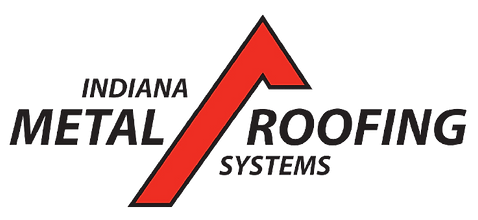Choosing the Right Metal for Your Roofing Needs
- Joseph Justice
- Mar 14
- 4 min read
Indiana Metal Roofing Systems, based in Fort Wayne, IN, provides a wide range of metal roofing solutions to suit your home's specific needs. The type of metal you choose for your roof can greatly impact its performance, cost, and longevity. Here’s a breakdown of the most common types of metal roofing materials to help you make the right choice.

1. Steel Roofs
Steel is one of the most commonly used materials for metal roofing, especially in commercial construction. Due to its abundance and recyclability, steel is a cost-effective option, making it increasingly popular for residential homes as well.
Benefits of Steel Roofing:
Durability: Steel roofs are highly durable and resistant to hailstorms and high winds, making them ideal for homes in harsh climates.
Longevity: With proper maintenance, steel roofs can last between 40 and 60 years.
Cost-Effective: As one of the most widely recycled materials in the world, steel is readily available and comes with a lower price tag compared to other metals.
Considerations:
Steel requires regular maintenance to prevent corrosion, especially in coastal areas where saltwater exposure is a concern. Protective coatings, such as galvanized or galvalume, can enhance steel’s resistance to rust and prolong its lifespan.
2. Aluminum Roofs
Aluminum is another popular material for metal roofing, especially in coastal regions where corrosion resistance is crucial. Aluminum roofs are lightweight, durable, and known for their energy efficiency.
Benefits of Aluminum Roofing:
Corrosion Resistance: Aluminum does not rust, making it the ideal choice for homes in coastal areas.
Lightweight: Aluminum is lighter than steel, reducing the overall strain on a home’s structure.
Energy Efficiency: Aluminum reflects solar heat, helping to lower cooling costs in warm climates.
Considerations:
Aluminum tends to be more expensive than steel, but its corrosion resistance and energy-saving properties often justify the higher upfront cost. Additionally, because aluminum is softer than steel, it may be more prone to denting during severe hailstorms.
3. Copper Roofs
Copper is often regarded as a premium roofing material due to its aesthetic appeal and impressive longevity. Over time, copper develops a natural patina, which protects the metal from corrosion and gives it a unique, weathered appearance.
Benefits of Copper Roofing:
Longevity: Copper roofs can last over 100 years, making them one of the most durable roofing materials available.
Aesthetic Appeal: The patina that forms on copper roofs adds character and visual interest to any home.
Low Maintenance: Copper requires minimal maintenance and is highly resistant to corrosion.
Considerations:
Copper is one of the most expensive roofing materials, and its soft nature can make it more susceptible to denting from hail or debris. Despite the higher cost, the longevity and beauty of copper make it a worthwhile investment for homeowners seeking a premium, long-lasting roof.
4. Zinc Roofs
Zinc is known for its self-healing properties, meaning that scratches or minor imperfections on a zinc roof will gradually fade as the material forms a protective layer over time. This makes zinc a popular choice for homes with complex architectural designs.
Benefits of Zinc Roofing:
Self-Healing: Zinc naturally forms a protective layer, which helps it “heal” over time, making it highly resistant to corrosion.
Longevity: Like copper, zinc roofs can last over 100 years with minimal maintenance.
Eco-Friendly: Zinc is 100% recyclable and has one of the lowest energy footprints of any metal roofing material.
Considerations:
Zinc is also on the higher end of the price spectrum, making it less common for residential homes compared to steel or aluminum. However, its longevity and self-healing properties make it an excellent choice for homeowners looking for long-term value.
FAQs
Q1: Which metal is the most affordable for roofing?Steel is typically the most affordable option, offering durability and resistance to extreme weather at a lower cost than copper or zinc.
Q2: How long do metal roofs last?Most metal roofs last between 40 to 100 years, depending on the material. Copper and zinc roofs can last over a century.
Q3: Are metal roofs energy-efficient?Yes, metal roofs, especially aluminum, reflect solar heat, helping to reduce cooling costs by up to 25%.
Q4: Can metal roofs resist corrosion?Aluminum and zinc are naturally resistant to corrosion, while steel requires protective coatings like galvanized or galvalume to prevent rust.
Q5: Are copper and zinc roofs worth the higher cost?Yes, while copper and zinc are more expensive, their longevity, minimal maintenance, and aesthetic appeal make them worthwhile investments.
Key Highlights of Indiana Metal Roofing Systems
A+ BBB rating and 5-star customer reviews
Wide variety of metal roofing materials tailored to your home’s needs
Expert installation of durable, long-lasting metal roofs
Energy-efficient and eco-friendly roofing solutions
Conclusion: Choosing the Best Metal for Your Roof
When selecting the ideal metal roofing material for your home, it’s essential to consider factors like budget, climate, and long-term maintenance. Indiana Metal Roofing Systems offers a wide range of metal roofing options, including steel, aluminum, copper, and zinc, to suit the specific needs of your home. Whether you’re looking for affordability, durability, or aesthetic appeal, metal roofing is a long-term investment that offers numerous benefits for homeowners.
Read more about: Metal Roof Pricing Insights


Comments